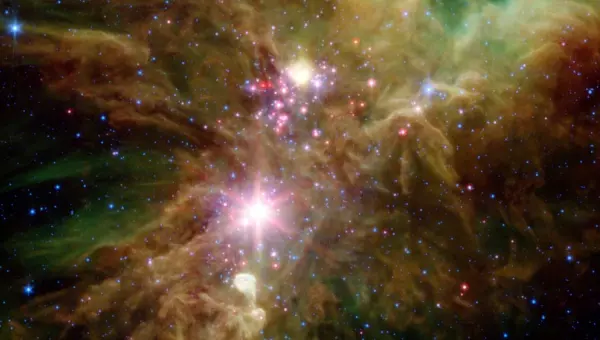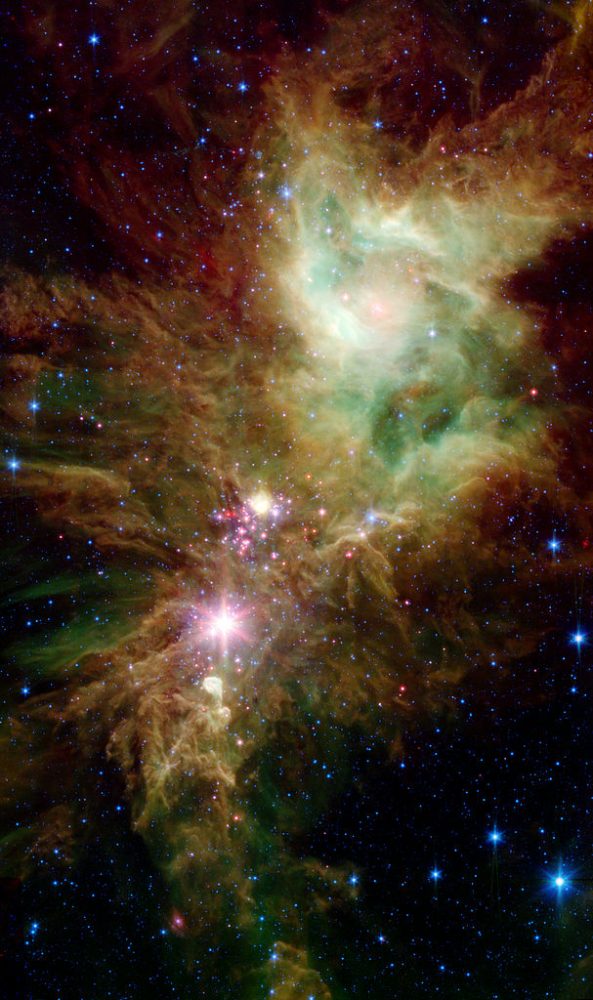The Snowflake Cluster is a young open cluster located in the constellation Monoceros. It is one of the objects found within the designation NGC 2264, along with the Cone Nebula, the Christmas Tree Cluster, and the Fox Fur Nebula, but not officially included. The cluster lies at an approximate distance of 2,400 light years from Earth.
The Snowflake Cluster is part of the larger Christmas Tree Cluster. It consists of a compact group of bright protostars that appear geometrically arranged in a pattern similar to that of a single crystal of snow. The young stars in the cluster seem to have formed in regularly spaced intervals in a structure that now resembles a snowflake or spokes of a wheel.

Snowflake Cluster. Image: NASA/JPL-Caltech/P.S. Teixeira (Center for Astrophysics)
The stars in the cluster are tightly packed and believed to be only 100,000 years old. They have not yet moved away from their stellar nursery. The snowflake pattern will dissipate when they eventually do.
Snowflake Cluster
Constellation: Monoceros
Object type: Open cluster
Distance: 2,400 light years

Newborn stars, hidden behind thick dust, are revealed in this image of a section of the Christmas Tree Cluster from NASA’s Spitzer Space Telescope. The newly revealed infant stars appear as pink and red specks toward the center and appear to have formed in regularly spaced intervals along linear structures in a configuration that resembles the spokes of a wheel or the pattern of a snowflake. Hence, astronomers have nicknamed this the “Snowflake Cluster.” Star-forming clouds like this one are dynamic and evolving structures. Since the stars trace the straight line pattern of spokes of a wheel, scientists believe that these are newborn stars, or “protostars.” At a mere 100,000 years old, these infant structures have yet to “crawl” away from their location of birth. Over time, the natural drifting motions of each star will break this order, and the snowflake design will be no more. While most of the visible-light stars that give the Christmas Tree Cluster its name and triangular shape do not shine brightly in Spitzer’s infrared eyes, all of the stars forming from this dusty cloud are considered part of the cluster. Like a dusty cosmic finger pointing up to the newborn clusters, Spitzer also illuminates the optically dark and dense Cone Nebula, the tip of which can be seen towards the bottom left corner of the image. Image: NASA/JPL-Caltech/P.S. Teixeira (Center for Astrophysics)